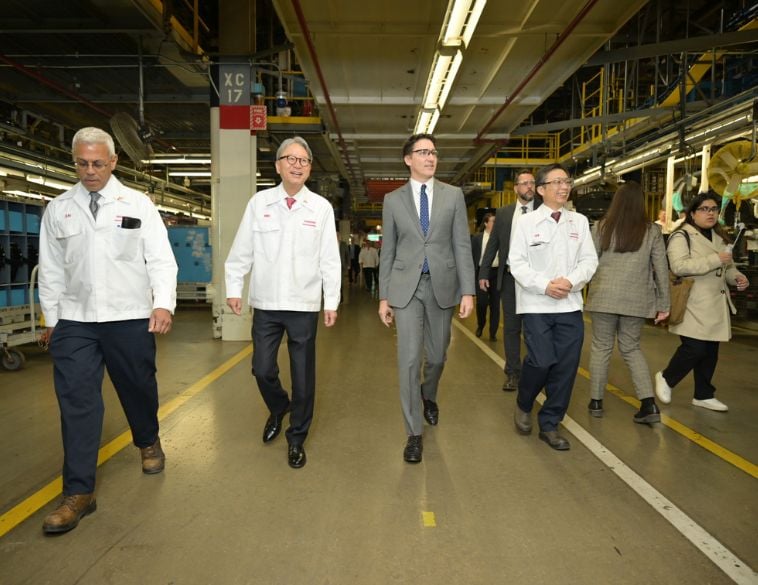The high demand for electric vehicles and the widespread shortage of new cars results in extreme waiting times for the consumer.
To keep customers engaged during this long delay, communications are an essential strategic tool for dealerships.
Establish a communication plan
“A customer who makes the decision to purchase a new vehicle will not be offended by frequent contact,” said Ian P. Sam Yue Chi, President and General Manager of the Corporation des concessionnaires automobiles du Québec (CCAQ). There is still a shortage, especially for electric vehicles, which are in high demand. The lead times for certain models are several years.

More and more, dealers are using CRM, a business relationship, sales and productivity management tool. These customer relationship management technologies allow companies to plan all relationships and interactions with their current and potential customers.
“Those who perform well are those who have planned regular communications,” says the CEO of the CCAQ. “CRM allows you to adapt to your customer and communicate with them according to their preferences: a regular text message, a phone call to review the file, email. Sales teams must adapt to each customer individually according to their own reality and their own desires in terms of customer experience.”
Keeping your customer happy while they wait
For Louis Desmeules, president of Mobilis Corporation, a group of more than 140 dealerships in the greater Quebec City area, there are many ways to keep customers engaged while they wait months for a car. First, in the ordering process, then when choosing accessories.
“We’re lucky to have vehicles that are practically custom made; there are thousands of options for both the interior of the vehicle and the exterior.”
During the production process, for some nested vehicles, manufacturers send a factory photo to the customer.
“An automated system on the assembly line takes photos during manufacturing; the photo is sent to the customer to communicate that their car is in production. It’s another way to keep the customer engaged while they’re waiting,” Desmeules says.

When the car is on the end of the production, a small gift can be sent to the customer. Once at the delivery stage, the customer is told that his vehicle is on the boat in the case of overseas imports.
“Some sellers like to tell their customers the name of the boat their car will be traveling on; customers like to have that information because they follow the boat’s route on different websites.”
Some dealerships periodically hold a special event for their customers who have vehicles on order for several months and will be waiting a few more months.
This is the case, for example, at Porsche Quebec, where Mr. Desmeules is General Manager. “The goal is to show customers that we are waiting with them and that we are looking forward to their vehicle being delivered. It’s an evening we call Waiting for delivery. This program is designed to keep our customers stimulated and it’s a spectacular private evening,” explains Mr. Desmeules.
Interest fluctuation
During this involuntary waiting period, consumers may be concerned about the value of their trade-in vehicle or fluctuating interest rates. “In our dealership, for example, when it comes to interest rates, we focus on transparency and we don’t promise anything,” says Desmeules. “As for the value of the trade-in vehicle, unless there is a dramatic change, Porsche will do everything to respect it.”
“We tell the customer what we think their trade-in vehicle might be worth at the time of the transaction and we try to anticipate that, but we can’t guarantee it. Then we try not to go back to that detail; that’s not the fun part of the transaction for a customer,” says Louis Desmeules.
“It’s a very big challenge,” confirms Ian P. Sam Yue Chi. “Over the last 24 months, the fluctuation in vehicle values has been remarkable; we’ve never seen that and it’s been the same with interest rates over the last year.”
As for the trade-in vehicle, the market dictates the price, notes the CEO of the CCAQ. The interest rate situation is different.
“Some will be able to guarantee interest rates a little longer, but it rarely goes beyond the current month,” says Mr. Sam Yue Chi. “But I’ll go further. Right now, dealerships are not able to guarantee the price of the vehicle either. If you order a vehicle today and you get it in two years with the inflation levels we’re seeing now, it could definitely be more expensive. But it could be cheaper too.”
Strategic communications with clients
Transparency remains the key in the industry. By being as transparent as possible, we inform the consumer correctly so that he knows what to expect and we avoid creating dissatisfaction.
“A lot of things are out of the dealers’ control,” says the CCAQ CEO. “It’s hard to control the manufacturing side because of the supply chain. With the amount of parts in a vehicle that are manufactured in different markets, different countries, everything is complex.”
In the end, the only thing the dealer really controls is his relationship with the customer.
“There is a step in the process where the salesperson must communicate by phone with the customer, but our goal is to go through the different means of communication to avoid the customer feeling an automatism in our exchanges. We try to make it as human as possible,” concludes Mr. Desmeules.



